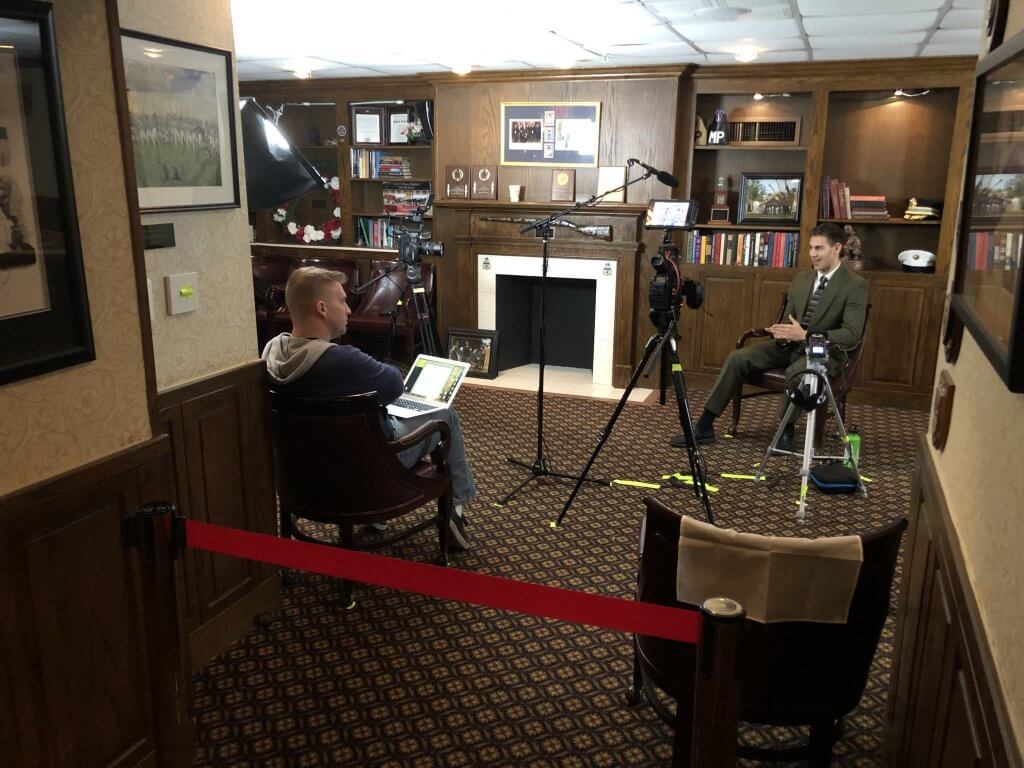Ever since the baby boomers came of age in the 1960s, the youth of America has feared becoming old. “Don′t trust anyone over 30,” was the mantra of anyone under 30. The Who even sang, “I hope I die before I get old.” For them, old is bad.
Then there’s The Old Guard.
The Old Guard is pretty much what it sounds like: the Army’s oldest active-duty regiment, also known as the 3rd US Infantry Regiment, dating back to 1784.
It currently includes young soldiers who are proud to serve in a regiment that has the word “old” in its name.
Veterans-turned-filmmakers Neal Schrodetzki and Ethan Morse have produced a four-part documentary on The Old Guard, with each part focusing on one of the specialized services it provides, and to highlight the history of the regiment.
The series — called “Honor Guard” — begins with a 60-minute episode on the caisson platoon.
Most Americans probably have heard the word “caissons” in the chorus of “The Army Song” that goes, “And those caissons go rolling along.”
But who are those caissons? Well, the documentary explains it all. The caissons were originally a platoon of horse-drawn wagons that brought ammunition to the troops on the frontlines. After unloading their payload, they returned with the wounded and dead.
Since horses are pretty much obsolete in warfare today — although the documentary does mention horses were used in Afghanistan in 2001 — the caisson platoon is still in existence and is mostly used for pageantry at burials of fallen soldiers at Arlington National Cemetery.
“Caisson” premiered on Amazon’s steaming service in December. The other three episodes, “The Regiment,” “Drill Team,” and “Full Honors,” as well as “Caisson,” will be made available on more than 50 additional streaming services throughout 2021.
In a stroke of good fortune, the filmmakers bagged actor Sam Elliott to narrate all four episodes. His baritone voice and western twang are a good match with the military-themed series.
Schrodetzki and Morse met when both were on the same casket team at Arlington. After they were discharged, both attended film school on the GI Bill. Then both worked at KTLA News in Los Angeles.
In 2016 they made “The Unknowns,” a feature documentary about the Tomb of the Unknown Soldier and the sentinels who protect it. It won best documentary feature at the Amsterdam Film Festival in 2017. Thus began their partnership at Time to Kill Productions.
The filmmakers needed to jump through endless hoops to get permission to make their movies. There was the US Army Entertainment Office in Los Angeles, the Pentagon’s Public Affairs Office, and even The Old Guard and Arlington each had their own public affairs offices. All of these agencies had to grant them approval before they could start shooting.
“Honor Guard” was made on a low budget, but you’d never know when looking at it.
Schrodetzki started shooting with an iPhone, thinking its quality was good enough. It wasn’t. So he purchased a Canon C300 Mark II camera with a set of lenses, which is far better equipment. Canon loaned them a second camera to use when shooting interviews.
Production value is increased with stock footage from actual battles and other visuals, such as classic paintings and illustrations.
Fortunately for the filmmakers, most of these are part of the permanent collection at the National Archives and therefore in public domain, making them free to use. The only catch was Schrodetzki needed to go to D.C. in person to acquire them. He spent three days there researching what they needed.
The icing on the cake is the soundtrack. In yet another stroke of good fortune, Morse’s cousin, Ryan Lindveit, is a composer. He wrote the music for the series, and then using his stature in academia, was able to acquire high-end samples of orchestral instruments. (These samples were recorded by professional orchestras, such as the New York Philharmonic.)
Using modern technology, Lindveit meticulously pieced together endless samples of countless instruments to give the illusion he had a full orchestra at his disposal.
While Schrodetzki is living the civilian life, Morse joined the Army National Guard after he was discharged. He did so because he feels he owes it to the combat veterans who did not spend their entire careers at Arlington, as he did.
He had joined the infantry shortly after Sept. 11 with the purpose of fighting terrorism overseas. But he has a love for the history of Arlington and volunteered (and was chosen) to be stationed there. And that’s where he stayed.
The pair treats filmmaking as their full-time job and plans to continue making movies, although not limited to documentaries.
“We’re all in with Time to Kill Productions,” Morse said, so plan on seeing more from them soon.

